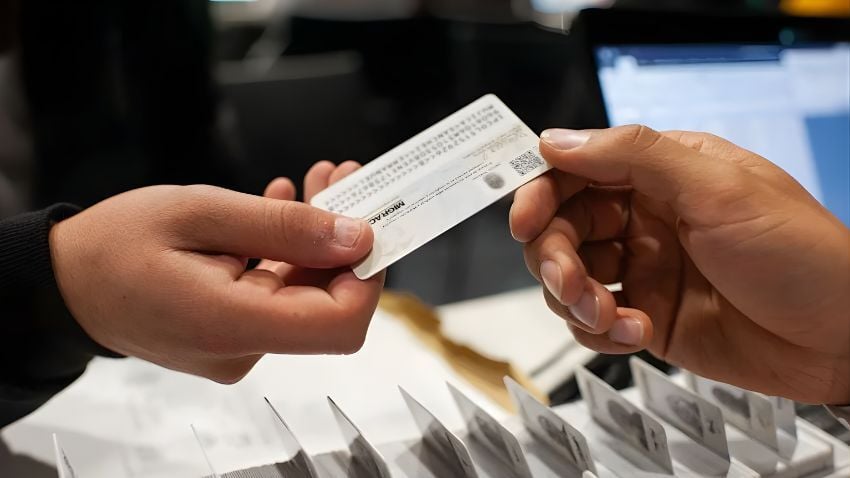The Different Types Of Residency You Need To Know
People choose the expat lifestyle for many reasons. Some seek greater personal freedom and better financial opportunities, while others want a lower...

5 min read
Have you ever considered diversifying your retirement savings with international real estate? If not, you might miss out on a unique strategy to diversify and enhance your retirement portfolio. Individual Retirement Accounts (IRAs) are a crucial tool for a comfortable retirement, but maximizing these savings often poses a challenge.
The Individual Retirement Account (IRA) is a popular financial tool that offers tax advantages to individuals who wish to save for their retirement. However, it is important to note that the IRA system is specific to the United States and its citizens. Non-U.S. citizens, regardless of their residency status, are generally not eligible to open or contribute to an IRA. This exclusivity is due to the specific regulations and tax laws governing IRAs, which are designed to incentivize retirement savings among U.S. citizens and residents.
Traditional IRAs generally confine you to the U.S. stock market, limiting your investment options. However, a Self-Directed IRA offers a broader range of investment options and greater control over your holdings, including the ability to invest in international real estate.
Today’s article will guide you on leveraging a Self-Directed IRA to tap into the international real estate market, potentially enhancing your retirement savings and offering a more lucrative approach than a traditional IRA.

Self-Directed IRA offers a broader range of investment options and greater control over your holdings
The three main types of IRAs are Traditional, Roth, and Self-Directed. Each offers different benefits and tax implications, but the Self-Directed IRA provides the broadest range of investment options, including international real estate.
A Traditional IRA is a type of retirement account in which individuals can make pre-tax contributions. Contributions grow tax-deferred until withdrawal. You will only pay taxes when you start making withdrawals in retirement. Early withdrawals may be subject to penalties and income tax.
Unlike a Traditional IRA, contributions to a Roth IRA are made with after-tax dollars, meaning that you pay taxes on the money before going into the account. A Roth IRA's significant advantage is that all retirement growth and withdrawals are tax-free, provided certain conditions are met. This can be particularly beneficial if you expect to be in a higher tax bracket in retirement.
A Self-Directed IRA is a type of IRA (either Traditional or Roth) that allows for a broader range of investment options. While Traditional and Roth IRAs typically involve investments in stocks, bonds, and mutual funds, Self-Directed IRAs allow for alternative investments such as real estate, private company stock, and even precious metals. This type of IRA gives investors more control over their investment choices but also requires more active management and understanding of their investments. It's important to note that while a Self-Directed IRA offers greater flexibility, it also comes with additional rules and potential pitfalls that need to be carefully considered.

Self-Directed IRAs allow for alternative investments such as real estate, private company stock, and even precious metals
A Self-Directed Individual Retirement Account (SDIRA) is a unique type of IRA that offers a broader range of investment opportunities than conventional IRAs. While traditional IRAs often limit your investment options to stocks and securities, an SDIRA allows you to diversify your portfolio with alternative investments. This is primarily because, in an SDIRA, the custodian plays a more advisory role, giving you the final say on where your money is invested. This level of control is a crucial advantage of an SDIRA.
The real power of an SDIRA lies in its ability to offer a wide array of investment options. You're not confined to the stock market. Instead, you have the freedom to invest in a variety of assets, including:
By offering such a diverse range of investment options, an SDIRA allows for the creation of potentially more lucrative investments. Moreover, diversifying your portfolio across both stable and volatile assets helps spread risk. This makes an SDIRA a powerful tool for enhancing your retirement savings, giving you the flexibility and control to tailor your investment strategy to your specific needs and goals.

SDIRA is a powerful tool for enhancing your retirement savings
A Self-Directed IRA (SDIRA) is not just a retirement savings tool; it's a gateway to a world of investment opportunities. International real estate is one of the most exciting and potentially lucrative of those.
Why consider international real estate? The answer lies in diversification and potential returns. Investing in properties abroad allows you to spread your risk across different economic infrastructures, providing a buffer against market volatility. Belize, Portugal, Mexico, and Colombia are among the current hotspots for real estate investment.
An SDIRA is an ideal vehicle for international real estate investment. It offers the flexibility to invest in various properties, from residential homes and hotels to agricultural resources. These investments can diversify your portfolio, boost your net worth, and increase the cash flow in your IRA.
However, understanding the various conditions that need to be met when using an SDIRA for real estate investment is essential. For instance, you can't live in a property purchased through your SDIRA, and all associated costs, including repairs, taxes, and insurance, must be paid through the SDIRA itself. Personal funds cannot be used for these expenses.
Finally, be aware that not all custodians permit foreign investments, so choosing one that does if you're interested in international real estate is crucial. With the proper planning and guidance, your SDIRA can be a powerful tool for enhancing your retirement savings through international real estate investments.
Related content: The Basics Of How To Get A Second Passport Or A Second Residency

An SDIRA is an ideal vehicle for international real estate investment
Navigating the process of using a Self-Directed IRA to purchase international real estate can seem complex. However, by following a step-by-step guide and understanding the legal considerations and IRS rules, you can make informed decisions and potentially enhance your retirement savings.
Choose a Custodian: Start by finding a custodian that specializes in self-directed IRAs and allows for international real estate investments.
Once you've chosen a custodian, you'll need to open a self-directed IRA account. This process typically involves completing an application and providing the necessary documentation.
After opening your account, you can roll over funds from an existing IRA or make a fresh contribution to your self-directed IRA.
Research and identify the international real estate property you want to invest in. Consider factors like location, market trends, and potential return on investment.
Once you've identified your investment, instruct your custodian to purchase the property using the funds in your self-directed IRA. The property title will be in the name of your IRA, not your personal name.
After the purchase, all expenses related to the property (such as maintenance, taxes, and insurance) must be paid from the IRA, and all rental income or profits must be returned to the IRA.

Investing in properties abroad allows you to spread your risk across different economic infrastructures
While a Self-Directed IRA offers greater investment freedom, it's crucial to understand the IRS rules to avoid potential penalties. Here are some fundamental rules to remember:
Prohibited Transactions: The IRS prohibits certain transactions within a Self-Directed IRA–for instance, you cannot buy property for personal use or sell property to a family member;
Unrelated Business Income Tax (UBIT): If your IRA is used to run a business or if debt financing is used to purchase a property, you may be subject to UBIT;
Distribution Rules: Similar to other IRAs, distributions from a Self-Directed IRA without penalty are only allowed once you reach the age of 59½.
A Self-Directed IRA (SDIRA) presents a unique and strategic opportunity to diversify your retirement savings by investing in international real estate. This approach not only mitigates risk by spreading investments across different economic infrastructures but also taps into the potential for impressive returns.
However, the complexities of these investments, including intricate rules and regulations, necessitate careful planning and understanding. Ensuring compliance is crucial to avoid penalties and maximize returns. Therefore, consulting with a financial advisor or tax professional is highly advisable for navigating the SDIRA investment landscape. Their expertise can guide informed decisions and ensure compliance with all governing rules and regulations. Remember, being a well-informed investor is crucial to success. With careful planning, strategic decisions, and the proper guidance, your SDIRA can powerfully enhance your retirement savings through international real estate investments.
If you want the best intel from the expat world, including profitable offshore opportunities, little-known tax-saving strategies, and hard-won insights on immigration, passports, and Plan-B residencies, all delivered to your inbox every single week, then join our daily correspondence, EMS Pulse®. Currently enjoyed by over 84,000 expats and expat-hopefuls worldwide. Fill in the form below to join our newsletter free:

Written by Mikkel Thorup
Mikkel Thorup is the world’s most sought-after expat consultant. He focuses on helping high-net-worth private clients to legally mitigate tax liabilities, obtain a second residency and citizenship, and assemble a portfolio of foreign investments including international real estate, timber plantations, agricultural land and other hard-money tangible assets. Mikkel is the Founder and CEO at Expat Money®, a private consulting firm started in 2017. He hosts the popular weekly podcast, the Expat Money Show, and wrote the definitive #1-Best Selling book Expat Secrets - How To Pay Zero Taxes, Live Overseas And Make Giant Piles Of Money, and his second book: Expats Guide On Moving To Mexico.
.jpg)
People choose the expat lifestyle for many reasons. Some seek greater personal freedom and better financial opportunities, while others want a lower...

Every year brings new lessons, opportunities, and milestones worth revisiting. As 2025 comes to a close, we’re taking a moment to reflect on the...

Latin America has become one of the most straightforward regions in the world for securing residency. Most countries in the region offer simple,...